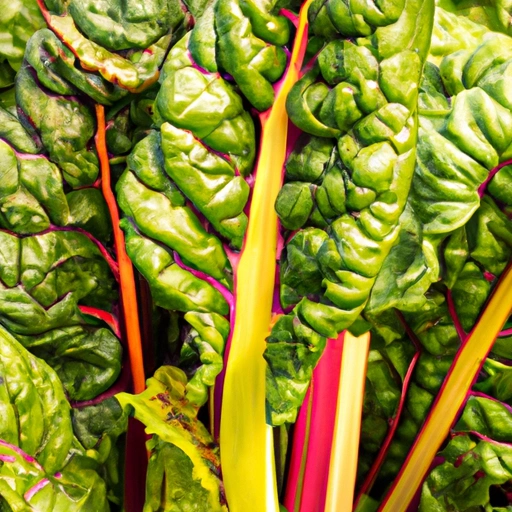Swiss Chard
Description

Swiss chard, also known as silverbeet, perpetual spinach, or simply chard, is a leafy green vegetable often used in Mediterranean cooking. It is recognized by its large, shiny green leaves and thick, crunchy stalks, which come in a variety of colors, including white, red, and yellow. Swiss chard is not only versatile in the kitchen but also packed with nutrients and health benefits, making it a favorite ingredient for those looking to add a nutritious touch to their meals.
Common uses
In culinary practices, Swiss chard is used much like spinach or kale. It can be eaten raw in salads, sautéed, boiled, or added to soups and stews. The leaves and stalks are both edible, although they are often prepared separately due to differing cooking times.
Nutritional value
Calories
A one-cup serving (about 175 grams) of cooked Swiss chard provides approximately 35 calories.
Protein
This serving size also contains around 3.3 grams of protein.
Fat
Swiss chard is very low in fat, with less than 1 gram per serving.
Carbohydrates
Swiss chard has about 7.2 grams of carbohydrates per cup.
Vitamins
It is an excellent source of vitamins A, C, and K. A serving can provide more than 300% of the recommended daily intake of vitamin K.
Minerals
Swiss chard is rich in minerals such as magnesium, potassium, iron, and manganese.
Health benefits
Swiss chard is known for its antioxidant properties and its potential to reduce blood pressure, improve bone health, and aid in diabetes management. The high vitamin K content is essential for bone health, while the fiber in Swiss chard helps with digestion.
Potential risks
Individuals with kidney stones should consume Swiss chard in moderation due to its oxalate content, which can contribute to stone formation. Additionally, the high vitamin K can interact with blood-thinning medications.
Common recipes
Swiss chard is used in dishes such as frittatas, quiches, pasta, and gratins. It is also a common ingredient in smoothies for a nutrient boost.
Cooking methods
The leaves are often sautéed with garlic and olive oil, blanched, or steamed. Stems can be pickled or braised as a flavorful side dish.
Pairing with other ingredients
Swiss chard pairs well with ingredients like garlic, lemon, pine nuts, and cheese. It complements proteins such as eggs, chicken, and fish.
Summary
Swiss chard is a nutrient-dense leafy green with a wide array of culinary uses. Its leaves and colorful stems provide both aesthetic appeal and health benefits in a variety of dishes. With its rich vitamin and mineral content, as well as its versatility, Swiss chard remains a popular choice for health-conscious food enthusiasts around the world.